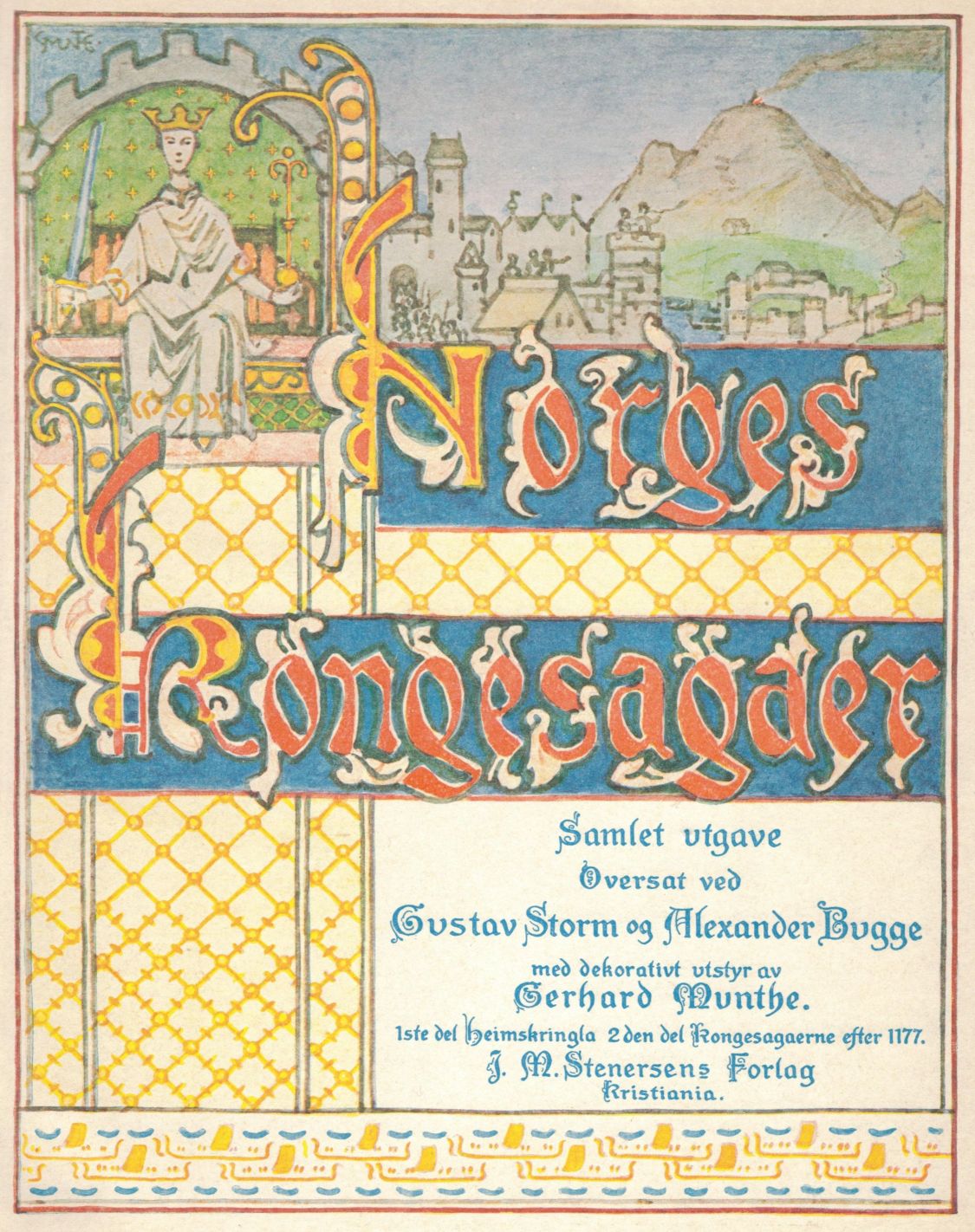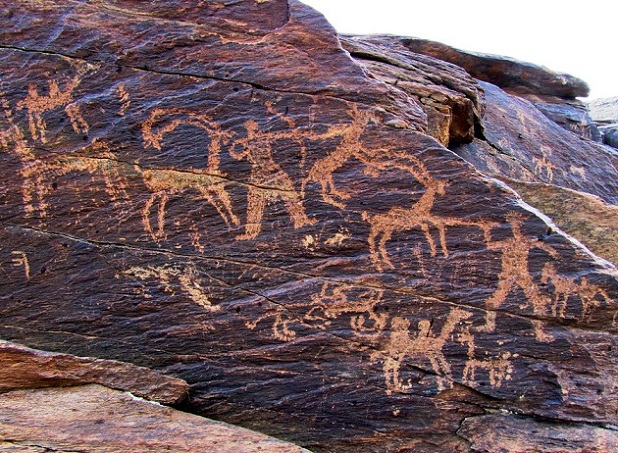|
Finnur Magnússon
Finnur Magnússon, sometimes referred to by the Danish version of his name under which he published, Finno Magnusun, Finn Magnussen or Magnusen, (27 August 1781 – 24 December 1847) was an Icelandic scholar and archaeologist who worked in Denmark. Biography Finnur Magnússon was born in Skálholt, Iceland. He was the grandchild of Finnur Jónsson, Bishop of Skálholt.Jón Helgason"Magnússon, Finnur" ''Dansk Biografisk Leksikon'' November 1938, volume 15, p. 234. (pdf) He claimed descent from Ári Marsson, who according to the ''Landnámabók'' discovered ''Hvítramannaland'' near Vinland. Finnur studied law at the University of Copenhagen and returned to Iceland to work in Reykjavík, where he became a clerk in the superior court in 1806.''Finnur Magnusson: Biografi'' at kalliope.org. [...More Info...] [...Related Items...] OR: [Wikipedia] [Google] [Baidu] |
Carl Christian Rafn
Carl Christian Rafn (January 16, 1795 – October 20, 1864) was a Danish historian, translator and antiquarian. His scholarship to a large extent focused on translation of Old Norse literature and related Northern European ancient history. He was also noted for his early advocacy of the recognition of Norse colonization of North America. Biography Carl Christian Rafn was born in Brahesborg on the island of Fyn in Funen County, Denmark. After attending the Odense Cathedral School (''Odense Katedralskole''), he entered the University of Copenhagen where he earned his law degree and graduated (1816). After having been employed as a lieutenant with the Funen light dragoons in Odense, in 1820, he became a teacher in Latin and grammar at the Army Cadet Academy (''Landkadetakademiet'') in Copenhagen. Rafn was particularly interested in discovering the location of Vinland as mentioned in Norse sagas. Together with Icelandic scholar Finnur Magnússon and Danish linguist Rasmus Rask ... [...More Info...] [...Related Items...] OR: [Wikipedia] [Google] [Baidu] |
Runamo
__NOTOC__ Runamo is a cracked dolerite dike (geology), dike in Sweden that was for centuries held to be a runic inscription and gave rise to a famous scholarly controversy in the 19th century. It is located 2.7 km from the church of Bräkne-Hoby in Blekinge, in South-Sweden. For hundreds of years people said it was possible to read an inscription, and learned men referred to it. As early as the 12th century, the Danish chronicler Saxo Grammaticus reported in the introduction to his ''Gesta Danorum'' that the runic inscription was no longer legible, being too worn down. This had been established by a delegation sent by the Danish king Valdemar I of Denmark (1131–1182) to read the inscription: Later in book 7 of ''Gesta Danorum'', Saxo explains that it was a memorial by the Danish king Harald Wartooth to his father's great deeds: In spite of Saxo's report that the inscription was illegible as early as the 12th century, the Denmark, Danish physician and antiquary Ole Wor ... [...More Info...] [...Related Items...] OR: [Wikipedia] [Google] [Baidu] |
Skald
A skald, or skáld (Old Norse: ; , meaning "poet"), is one of the often named poets who composed skaldic poetry, one of the two kinds of Old Norse poetry in alliterative verse, the other being Eddic poetry. Skaldic poems were traditionally composed to honor kings, but were sometimes Extemporaneous speaking, ex tempore. They include both extended works and single verses (''Lausavísa, lausavísur''). They are characteristically more ornate in form and diction than eddic poems, employing many kennings, which require some knowledge of Norse mythology, and heiti, which are formal nouns used in place of more prosaic synonyms. ''Dróttkvætt'' metre (poetry), metre is a type of skaldic verse form that most often use internal rhyme and alliteration. More than 5,500 skaldic verses have survived, preserved in more than 700 manuscripts, including in several sagas and in Snorri Sturluson's ''Prose Edda'', a handbook of skaldic composition that led to a revival of the art. Many of these vers ... [...More Info...] [...Related Items...] OR: [Wikipedia] [Google] [Baidu] |
Gustav Storm
Gustav Storm (18 June 1845 – 23 February 1903) was a Norwegians, Norwegian historian, a professor at the University of Oslo, Royal Frederick University in Oslo, Christiania from 1877. He was a driving force in the research of Scandinavian history and literature of the Middle Ages. Personal life Storm was born in Rendal Municipality in Hedmark county, as the son of Ole Johan Storm and Hanna Jørgine Mathilde Breda. The family moved to Lardal Municipality in Vestfold, where his father was a vicar. When Gustav was five years old, his father died, and the family subsequently moved to Oslo, Christiania (now Oslo). He was a brother of linguist Johan Storm and a cousin of zoologist Vilhelm Storm. He died at Bygdøy in 1903. Career Storm examen artium, finished his secondary education in 1862. He studied philology at the University of Oslo, Royal Frederick University in Christiania, graduating as cand.philol. in 1868. He then worked as teacher for some years, and also carried out ... [...More Info...] [...Related Items...] OR: [Wikipedia] [Google] [Baidu] |
The Nation
''The Nation'' is a progressive American monthly magazine that covers political and cultural news, opinion, and analysis. It was founded on July 6, 1865, as a successor to William Lloyd Garrison's '' The Liberator'', an abolitionist newspaper that closed in 1865, after ratification of the Thirteenth Amendment to the United States Constitution. Thereafter, the magazine proceeded to a broader topic, ''The Nation''. An important collaborator of the new magazine was its Literary Editor Wendell Phillips Garrison, son of William. He had at his disposal his father's vast network of contacts. ''The Nation'' is published by its namesake owner, The Nation Company, L.P., at 520 8th Ave New York, NY 10018. It has news bureaus in Washington, D.C., London, and South Africa, with departments covering architecture, art, corporations, defense, environment, films, legal affairs, music, peace and disarmament, poetry, and the United Nations. Circulation peaked at 187,000 in 2006 but dropped t ... [...More Info...] [...Related Items...] OR: [Wikipedia] [Google] [Baidu] |
Rhode Island
Rhode Island ( ) is a state in the New England region of the Northeastern United States. It borders Connecticut to its west; Massachusetts to its north and east; and the Atlantic Ocean to its south via Rhode Island Sound and Block Island Sound; and shares a small maritime border with New York, east of Long Island. Rhode Island is the smallest U.S. state by area and the seventh-least populous, with slightly more than 1.1 million residents . The state's population, however, has continually recorded growth in every decennial census since 1790, and it is the second-most densely populated state after New Jersey. The state takes its name from the eponymous island, though most of its land area is on the mainland. Providence is its capital and most populous city. Native Americans lived around Narragansett Bay before English settlers began arriving in the early 17th century. Rhode Island was unique among the Thirteen British Colonies in having been founded by ... [...More Info...] [...Related Items...] OR: [Wikipedia] [Google] [Baidu] |
Petroglyphs
A petroglyph is an image created by removing part of a rock surface by incising, picking, carving, or abrading, as a form of rock art. Outside North America, scholars often use terms such as "carving", "engraving", or other descriptions of the technique to refer to such images. Petroglyphs, estimated to be 20,000 years old are classified as protected monuments and have been added to the tentative list of UNESCO's World Heritage Sites. Petroglyphs are found worldwide, and are often associated with prehistoric peoples. The word comes from the Greek prefix , from meaning "stone", and meaning "carve", and was originally coined in French as . In scholarly texts, a ''petroglyph'' is a rock engraving, whereas a '' petrograph'' (or ''pictograph'') is a rock painting. In common usage, the words are sometimes used interchangeably. Both types of image belong to the wider and more general category of rock art or parietal art. Petroforms, or patterns and shapes made by many large ... [...More Info...] [...Related Items...] OR: [Wikipedia] [Google] [Baidu] |
Dighton Rock
The Dighton Rock is a 40-ton boulder, originally located in the riverbed of the Taunton River at Berkley, Massachusetts (formerly part of the town of Dighton). The rock is noted for its petroglyphs ("primarily lines, geometric shapes, and schematic drawings of people, along with writing, both verified and not."), Kenneth L. Feder, ''Encyclopedia of Dubious Archaeology: From Atlantis To The Walam Olum'', page 80 (Greenwood, 2010). carved designs of ancient and uncertain origin, and the controversy about their creators. In 1963, during construction of a coffer dam, state officials removed the rock from the river for preservation. It was installed in a museum in the nearby Dighton Rock State Park. In 1971, it was listed on the National Register of Historic Places (NRHP). Appearance The boulder has the form of a slanted, six-sided block, approximately high, wide, and long. It is gray-brown crystalline sandstone of medium to coarse texture. The surface with the inscriptions has a t ... [...More Info...] [...Related Items...] OR: [Wikipedia] [Google] [Baidu] |
Runes
Runes are the Letter (alphabet), letters in a set of related alphabets, known as runic rows, runic alphabets or futharks (also, see ''#Futharks, futhark'' vs ''#Runic alphabets, runic alphabet''), native to the Germanic peoples. Runes were primarily used to represent a sound value (a phoneme) but they were also used to represent the concepts after which they are named (ideographic runes). Runology is the academic study of the runic alphabets, runic inscriptions, runestones, and their history. Runology forms a specialised branch of Germanic philology. The earliest secure runic inscriptions date from at latest AD 150, with a possible earlier inscription dating to AD 50 and Tacitus's possible description of rune use from around AD 98. The Svingerud Runestone dates from between AD 1 and 250. Runes were generally replaced by the Latin alphabet as the cultures that had used runes underwent Christianisation, by approximately AD 700 in central Europe and 1100 in northern Europe. Ho ... [...More Info...] [...Related Items...] OR: [Wikipedia] [Google] [Baidu] |
American Antiquarian Society
The American Antiquarian Society (AAS), located in Worcester, Massachusetts, is both a learned society and a national research library of pre-twentieth-century American history and culture. Founded in 1812, it is the oldest historical society in the United States with a national focus. Its main building, known as Antiquarian Hall, is a U.S. National Historic Landmark in recognition of this legacy. The mission of the AAS is to collect, preserve and make available for study all printed records of what is now known as the United States of America. This includes materials from the first European settlement through the year 1876. The AAS offers programs on a wide variety of subjects including but not limited to Environmental History, Indigenous Peoples Studies, and American Religion for professional scholars, pre-collegiate, undergraduate and graduate students, educators, professional artists, writers, genealogists, and the general public. The collections of the AAS contain over fou ... [...More Info...] [...Related Items...] OR: [Wikipedia] [Google] [Baidu] |
Aurora Borealis
An aurora ( aurorae or auroras), also commonly known as the northern lights (aurora borealis) or southern lights (aurora australis), is a natural light display in Earth's sky, predominantly observed in high-latitude regions (around the Arctic and Antarctic). Auroras display dynamic patterns of radiant lights that appear as curtains, rays, spirals or dynamic flickers covering the entire sky. Auroras are the result of disturbances in the Earth's magnetosphere caused by enhanced speeds of solar wind from coronal holes and coronal mass ejections. These disturbances alter the trajectories of charged particles in the magnetospheric plasma. These particles, mainly electrons and protons, precipitate into the upper atmosphere ( thermosphere/exosphere). The resulting ionization and excitation of atmospheric constituents emit light of varying color and complexity. The form of the aurora, occurring within bands around both polar regions, is also dependent on the amount of accelera ... [...More Info...] [...Related Items...] OR: [Wikipedia] [Google] [Baidu] |








